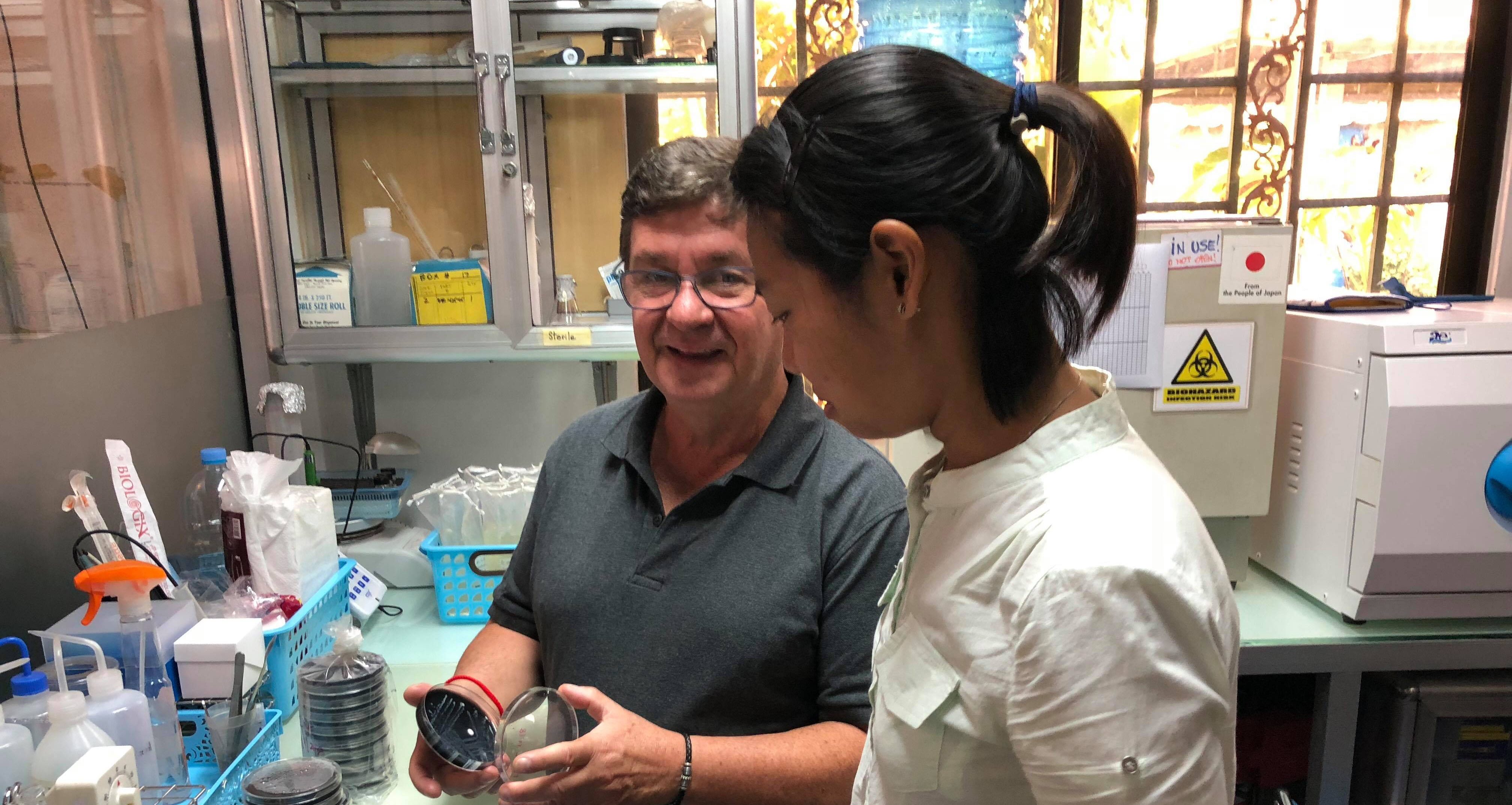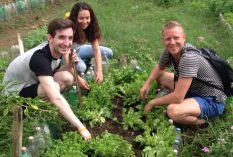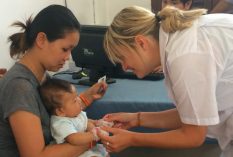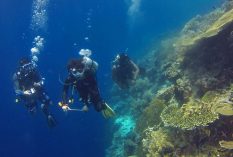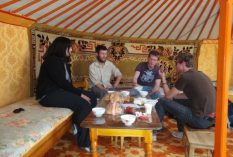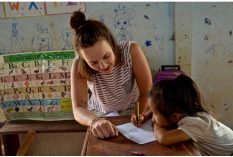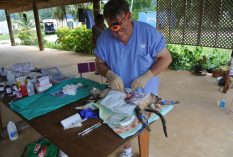VOLUNTEER ASSIGNMENT – COLIN DIVOLA
COMPLETED ACTIVITIES, OBSERVATIONS AND RECOMMENDATIONS
25 October – 20 December 2018
TABLE OF CONTENTS
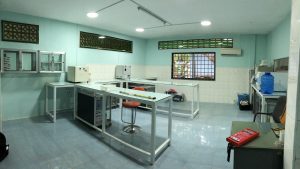
1. QUALITY PROCEDURES 3
2. METHODS 7
3. EQUIPMENT 14
4. DOCUMENTATION 15
5. NEW LABORATORY 16
6. LABORATORY SUPPLY ALTERNATIVES
17
7. COMMERCIAL CHALLENGES vs TECHNICAL CAPABILITY 18
1. QUALITY PROCEDURES
1.1. Control Cultures
Currently control cultures are not available or used during the testing procedures applied in the WFC laboratory. As a result, there is no way of knowing whether microbiological media is performing correctly and whether organisms are producing typical reactions.
Requirements for the use of cultures in performance testing batches of laboratory media in accredited facilities are extensive and involve both qualitative and quantitative measures. At this stage, it would not be appropriate to apply such stringent requirements in the WFC laboratory. However, as a minimum, it is suggested that controls should be set up at the time each test (once per day) is performed.
A request for freeze-dried cultures of 5 organisms was made of an Australian accredited reference material provider, IFM Quality Services. IFM have kindly offered to provide these materials free of charge. These were shipped from Vietnam and arrived in sound condition. The procedure for resuscitation of these cultures will be demonstrated and documented and a worksheet for recording culture history has been prepared. Also, some mixed-organism reference materials were included to allow the lab to assess its own performance. Should WFC wish to participate in proficiency programs IFM will be able to assist. Contact is John Flemming ([email protected]). More details can also be found on the IFM website, www.ifmqs.com.au.
1.2. Method Validation / Verification
When introducing a new testing method, it is important that a laboratory demonstrates that the materials, resources and personnel can correctly apply the method and produce the expected results. This is achieved by spiking a sample with the target organism and recovering it, either qualitatively or quantitatively (as appropriate). Examples of the need for this requirement are:
i) initial evidence suggests that Moringa samples may have antimicrobial properties that influence the final test result;
ii) the adoption of a method for Salmonella that is not appropriate and unlikely to recover Salmonella in low numbers. (Salmonella is often present in low numbers, maybe sub-lethally damaged and not distributed uniformly – hence requiring a resuscitation and enrichment step in the method).
The technique of spiking samples with the target organism has been demonstrated and undertaken a couple of times whilst developing and training for Legionella testing of water samples.
1.3 Equipment Calibrations
Key pieces of equipment ought to be calibrated, or at least checked, to ensure conditions critical to the test result are maintained; most importantly temperatures and weights. It is appreciated that access to such external services is not available. As a minimum, it is suggested that ice point (ice – water slurry) checks should be performed on thermometers and a rough check on balance accuracy could be made by measuring a known volume of water (assuming 1mL = 1g). Whilst not ideal these methods will highlight any major deviations. When feasible a reference thermometer and a set of standard check weights should be purchased.
1.4 Monitoring of Thermostatically Controlled Equipment
Incubators, fridges, etc should be monitored daily. Charts have been prepared for this purpose (currently being used for 37°C incubator). More thermometers are required. It is recommended that each piece of equipment have a dedicated, uniquely identified, thermometer. To achieve stable readings thermometers should be immersed in a closed tube of water or paraffin.
Calibration of autoclaves is beyond the realistic capability of the WFC laboratory. It is, however, strongly recommended that the use of autoclave tape be introduced to ensure separation of sterile and non-sterile materials. Autoclave tape is inexpensive and should be available from most laboratory suppliers.
Figure 1 Autoclave tape changes colour when exposed to steam
In addition, a more sensitive but simple check should be performed atleast once per month. Thermalog (3M) strips (time / temperature integrators) are suitable for this purpose and will assist identify any major equipment issues.
Figure 2 Thermalog strips provide semi-quantitative detail re time / temperature exposure in autoclaves
1.5 Media Preparation / Quality Control
The quality of microbiological media is fundamental to the performance of test methods. As discussed in 1.1 performance testing of media in accredited facilities is mandatory and extensive. A significant challenge for WFC is that media is made in very small quantities (sometimes for just the tests currently required). It is understood that this approach is to avoid wastage which can become significant. Where the opportunity exists media (plates, tube of diluents and tubes of agar for re-melting when required) may assist to provide consistency and improve the efficiency of media production. In some instances, another alternative might be the adoption of Petrifilm (3M) products which have a long shelf life and require no preparation. (see further information in 2. Methods). All Petrifilm methods carry appropriate validation approvals.
A checksheet has been prepared for recording media batch preparation and QC checks. This should be completed for each media batch preparation.
Figure 3 Petrifilm Aerobic Plate Count Figure 4 Petrilm Staph Express
Figure 5 Petrifilm Enterobacteriaceae
1.6 Sample Preparation
Non-liquid foods need thorough blending. Whilst generally only Moringa powder and leaf samples are prepared currently, this will become more of an issue when a wider variety of sample types are presented to the lab. It is recommended that larger sterile bags (stomacher bags) are obtained to allow for better mixing.
It will be necessary to obtain a “Waring” type blender with multiple mixing cups or stomacher. An enquiry has been made with BioMerieux in Australia, who produce a stomacher called “the Smasher”. They are currently investigating whether they might have a Smasher to provide to WFC. As at 18 December, 2018 a final response has not been received.
Figure 6 BioMerieux Smasher
1.7 Managing Cross-Contamination Risks
As is already understood, the current laboratory environment is a little cramped. During the course of this assignment this has been resolved by the relocation to a larger facility. Overall the procedures followed and aseptic technique demonstrated are good.
As new methods are added focus needs to be maintained and additional steps taken to manage cross-contamination risks. An example is that an enrichment method for Salmonella has the potential of producing very large numbers of this pathogen. Without proper care, it is relatively easy to cause laboratory contamination of samples that did not contain the organism.
Key steps to managing cross-contamination risks are: workspace separation, cleaning / sanitizing procedures, restricting lab access, hand cleaning, lab coats (including regular cleaning) and contaminated waste management, treatment and disposal. A change of lab coat is recommended when handling enrichments for pathogens such as Salmonella.
It’s suggested that the old gas-fired pressure cooker be used for destroying biological waste. This could possibly be placed in the kitchen area outside the lab, at the new facility. It is also recommended that autoclave bags be purchased for containing and sterilizing biological waste.
2 METHODS
2.1 Legionella in Water
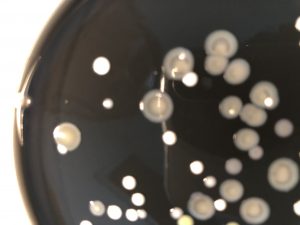
Media and control cultures have been prepared and initial training and basic verification has been performed. A draft method has been documented, as has an Excel Worksheet to record and manage test observations and to calculate results (which is quite involved). Training in the use of this worksheet has been provided.
The method calls for two different types of media to be used in parallel. Materials were available for one of these media (GVPC). The supplement necessary to prepare the second media (BMPA) has been ordered but not likely to arrive for several weeks.
As maintaining a viable control culture of Legionella is challenging (it tends not to survive well on laboratory media), guidance has been provided on steps to do this (namely store culture in water, at room temperature and in the dark).
The Legionella method calls for the use of a 50°C water bath for heat treating samples. A make-shift solution has been developed using the lab’s heated magnetic stirrer. Manual monitoring is required to ensure the heat treatment is maintained within 50 ± 1°C.
Key to the performance of this method is the technician’s ability to recognize (and therefore confirm) suspect colonies of Legionella. This is achieved by viewing the colony morphology under low power magnification. A technique has been developed using a phone camera to provide the appropriate level of magnification. The skill of recognizing Legionella colonies builds with experience.
Figure 7 Legionella at day 4, under low magnification
2.2 Salmonella in Food
The current method being adopted for the detection of Salmonella is not valid. As mentioned in 1.2, Salmonella is often present in low numbers, not uniformly distributed and sometimes cells may be damaged. The first step of a method needs to involve a resuscitation and enrichment step. Larger aliquots of sample are usually tested, usually 25 grams.
The sample is diluted using an enrichment media (Buffered Peptone Water) at a ratio of 1:10 (i.e. 25grams sample plus 225 mL BPW).
The classical method for the isolation of Salmonella involves several stages: primary non-selective enrichment followed by selective enrichment and then selective differential agar plates. Some skill / experience is required to recognize and isolate typical colonies. These then need to be subjected to biochemical and serological confirmation steps.
Suffice to say the classical method is long and involved and requires many different media and test reagents, some with limited shelf life. Testing for other pathogens, such as Listeria, follow similar multiple steps. This is problematic for WFC where test numbers are currently extremely low.
As a result, alternative methods that maybe more applicable have been investigated. Note that in all cases a 41°C incubator is required. Only methods with internationally recognized validations / approvals have been considered and reviewed below:
2.2.1 Vidas Immunoassay (BioMerieux)
Figure 8 BioMerieux MiniVidas
Whilst this method is simple, quick and usually cost effective it does involve an instrument. Access to service and repairs limits the usefulness of this method in Cambodia, where response times are expected to be long, if available at all. This solution is worth consideration in the future if the constraints can be resolved. A positive result is “presumptive” and requires confirmation.
2.2.2 3M Petrifilm Salmonella Express System
Figure 9 3M Petrifilm Salmonella Express System
This system has simplified the testing and interpretation steps during Salmonella testing. It has the following advantages: prepared “media” (including a confirmation disk) have long shelf lives, materials do not take up much storage or incubation space and interpretation of positives (confirmation) has been made less subjective than other methods. The major disadvantage is that it is quite expensive. Based on a quote obtained from a supplier in Vietnam, the material costs for the initial stage of testing is ~US$6.50. If suspect Salmonella is present confirmation adds a further US$10.50 to the test cost. This method is probably too expensive but might be worth consideration.
2.2.3 Bio-Rad RAPID’ Salmonella Protocol
Bio-Rad have built a testing protocol for Salmonella around their RAPID’ Salmonella chromogenic media. Whilst the writer has not had experience with this product it appears to be well developed and validated as a complete testing solution.
A quote which had been previously obtained (maybe out of date) indicates a cost of ~US$2.60 for the primary part of the test, with an estimated cost of approximately US$5.40 where confirmation is required. This method appears to be a good, cost-effective option.
Figure 10 Bio-Rad Salmonella RAPID’ Protocol
2.2.4 Merck Singlepath Salmonella
The format of this lateral flow test is similar to the well-known home pregnancy tests.
The testing protocol involves a non-selective enrichment (24 hours) followed by a selective enrichment (24 hours). The lateral flow test then takes approximately 20 mins to complete. The result is presumptive and requires further confirmation.
I do not have pricing specifics but have been told the test strips are approx. AUD$10 each (USD$7.30).
Figure 11 Merck Singlepath Salmonella test strip
2.2.5 BioControl 1-2 Salmonella Test (BioControl is now part of Merck)
A self-contained test that operates based on immunodiffusion and exploits the motility of salmonellae. The test takes 14 hours only but confirmation is required. Price details are not available. Is available in a box of 12 tests (which is probably the smallest pack size of any of the kit type Salmonella tests).
Figure 12 BioControl Salmonella 1-2 Test
2.3 Rationalization of Incubation Temperatures
Currently there are two incubators. Upon my arrival at the laboratory, due to method requirements, one was operated at 38°C and the other at 35°C.
Table 1. Summary of current method incubation requirements
Method Incubation Requirement
TVC – Water 36 ± 2°C
Coliforms / E. coli – Water 36 ± 2°C
Legionella – Water 36 ± 2°C
APC / SPC – Food 30 ± 1°C
Enterobacteriaceae – Food 37 ± 1°C
Coliforms / E. coli – Food 37 ± 1°C
The first incubator has now been adjusted to operate at 37 ± 1°C as this range satisfies the requirements of all methods with the exception of APC / SPC for food. The incubator has been monitored and shown to perform satisfactorily in this range.
It is proposed that the second incubator be operated at 30 ± 1°C to meet the requirements of the APC / SPC method.
A further incubator operating at 41.5 ± 1°C is required to perform Salmonella testing.
2.4 Potential next method additions
2.4.1 Pseudomonas spp. in water
This could be a useful addition to the current suite of water tests. It is appropriate to monitor for Pseudomonas spp. in bottled drinking water, swimming pools and spas, and recreational waters. Pseudomonas is an opportunistic pathogen and can cause infections of the skin, eyes and ears. The method is a fairly straightfoward filtration method.
2.4.2 Salmonella in Food
Discussed in detail in 2.2.
2.4.3 Listeria monocytogenes in food
Next to Salmonella this is the next food pathogen of greatest significance. It is particularly applicable to ready-to-eat foods such as deli meat, smoked salmon, cheeses and other dairy products. The method follows somewhat similar steps to Salmonella, i.e. non-selective enrichment, selective enrichment, selective isolation / differentiation and biochemical confirmation.
2.4.4 Bacillus cereus in food
Bacillus cereus is a food pathogen that causes two types of food poisoning. One results in vomiting within a few hours of consuming the infected food, the other causes diarrhea within 16 hours. One of the most commonly affected food is rice which has been improperly stored after cooking. The illness is usually relatively mild and resolves within 24-48 hours. The method for testing for Bacillus cereus is relatively straightforward. It is an enumeration method. With respect to interpretation of results, the infective dose is considered to be in excess of 105 cells per gram.
2.4.5 Hygiene swabs
The application of existing methods, especially coliforms (and possibly E. coli), is appropriate for the monitoring of hygiene and effectiveness of sanitation procedures in commercial kitchens and catering facilities.
3 EQUIPMENT
Additional equipment that may prove beneficial:
3.1 Stomacher
See 1.6 Sample Preparation
3.2 41.5°C Incubator
See 2.2 Salmonella in Food
3.3 50°C Waterbath
See 2.1 Legionella in Water
3.4 Additional thermometers
See 1.4 Monitoring Thermostatically Controlled Equipment
3.5 Test tube racks
General Requirement
3.6 Labelling gun (pricing ticket gun)
As additional media are made and need to be identified and more plates are used in testing this is a useful tool for recording sample ID, etc on plates and tubes. 2-line, alpha-numeric type is recommended.
4 DOCUMENTATION
There appears to be many procedures that have been documented (by a former volunteer) but much of the detail has not been implemented and records are not being maintained. It is noted that many of these documents describe an ideal situation for a more developed laboratory. Whilst these documents form an excellent foundation and “road map”, in many cases, it would not be possible for WFC to fully comply with the systems as documented. Some revisions have been drafted when they are directly associated with work undertaken. It is suggested that WFC staff take ownership of these documents and amend them to what is achievable. It is also recommended that the original documents be kept as references for future review.
5 NEW LABORATORY
The following concept layout has been recommended for the new laboratory which will become operational in December 2018. Modifications will be made (and have already been identified) however this layout serves to identify functional areas within the lab and a plan for segregation of incompatible activities.
6 LABORATORY SUPPLY ALTERNATIVES
It is appreciated how difficult it can be to source the necessary laboratory supplies in Cambodia where the are limited supply options within the country. Contact has been made with ThernoFisher who have recently appointed an agent / distributor in Phnom Penh, Blue Opportunity Medical Co., Ltd. Blue Opportunity’s Managing Director, Mr Buntit Houy will visit WFC on 18 December to establish if this may assist WFC to source materials and identify cost savings.
7 COMMERCIAL CHALLENGES vs TECHNICAL CAPABILITY
WFC faces significant challenges in generating new markets for tests, whether they be new water tests or food tests. Opening up a new market where there is perceived little need is a challenge.
This is best explained by way of an example, e.g. Legionella test in water. There are two different selective media used for this test and both use freeze-dried supplements (antibiotics) that need to be suspended in order to make the agars. Once rehydrated the supplements must be used immediately. In each case the pack size of the supplement dictates that 500mL of agar is prepared. In each case this represents approximately 30 plates. Each test uses 3 of each type of plate which translates to 10 samples. The shelf life of the prepared media is 4 weeks. This means that a minimum submission of 10 tests per month is required to ensure media is not wasted.
This issue is resolved with existing methods by the preparation of very small quantities of agars i.e. media is sometimes prepared based on requirements for the particular day. As more complex methods are confronted, so is the complexity of the media and reagents required to perform those methods. This contributes to a significant risk of wastage of components that are, sometimes, quite expensive.
Ideally, the opportunity for growing new testing markets (water or food) means trying to find a market(s) or a specific customer that will deliver a moderate and predictable number of tests on a regular basis. It is appreciated that this becomes a “chicken and egg “dilemma – difficult to establish capability if samples are not forthcoming but also difficult to sell capability until you have developed it.
Food Microbiologist in Cambodia

